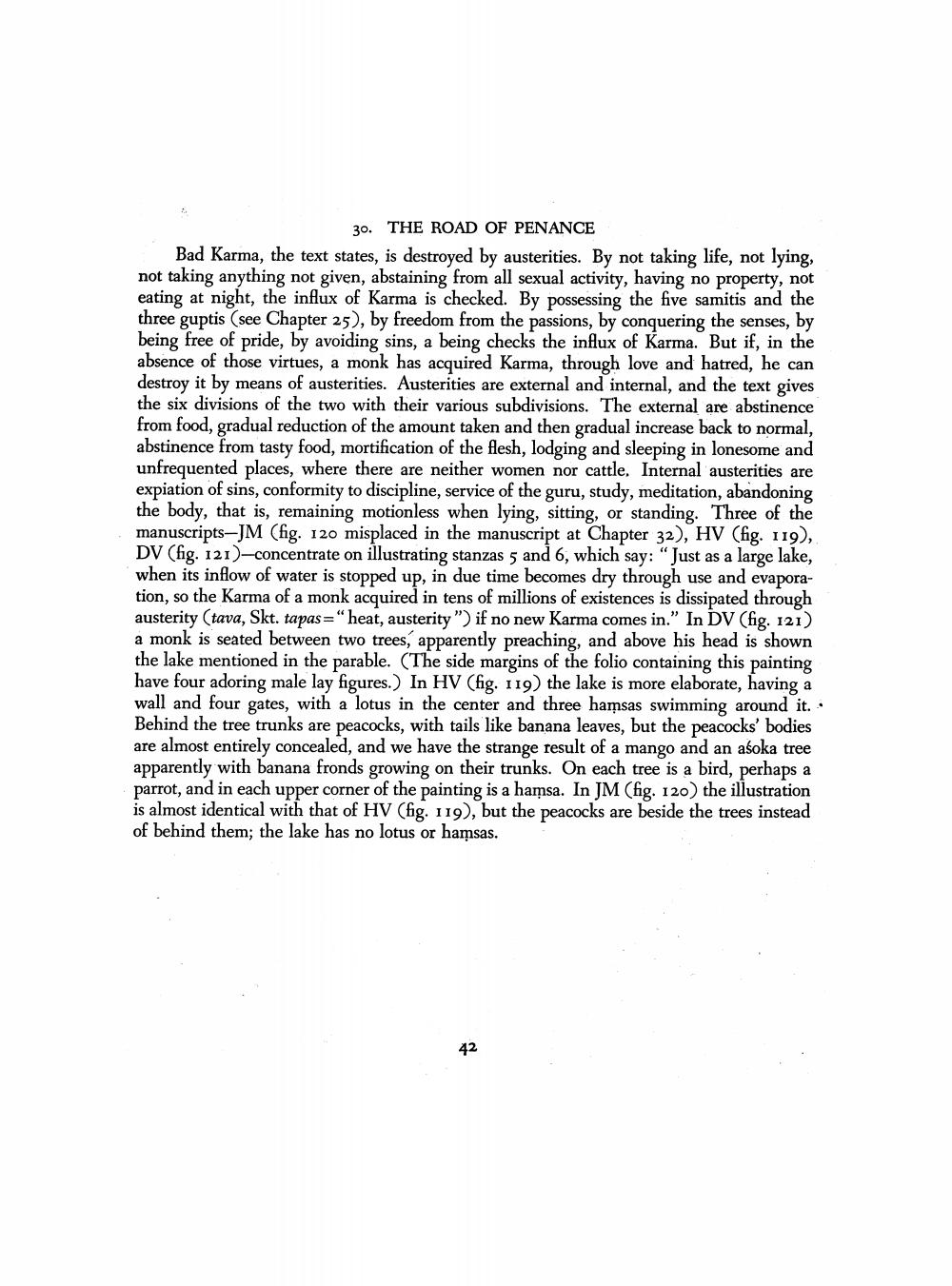________________
30. THE ROAD OF PENANCE
Bad Karma, the text states, is destroyed by austerities. By not taking life, not lying, not taking anything not given, abstaining from all sexual activity, having no property, not eating at night, the influx of Karma is checked. By possessing the five samitis and the three guptis (see Chapter 25), by freedom from the passions, by conquering the senses, by being free of pride, by avoiding sins, a being checks the influx of Karma. But if, in the absence of those virtues, a monk has acquired Karma, through love and hatred, he can destroy it by means of austerities. Austerities are external and internal, and the text gives the six divisions of the two with their various subdivisions. The external are abstinence from food, gradual reduction of the amount taken and then gradual increase back to normal, abstinence from tasty food, mortification of the flesh, lodging and sleeping in lonesome and unfrequented places, where there are neither women nor cattle. Internal austerities are expiation of sins, conformity to discipline, service of the guru, study, meditation, abandoning the body, that is, remaining motionless when lying, sitting, or standing. Three of the manuscripts-JM (fig. 120 misplaced in the manuscript at Chapter 32), HV (fig. 119), DV (fig. 121)-concentrate on illustrating stanzas 5 and 6, which say: "Just as a large lake, when its inflow of water is stopped up, in due time becomes dry through use and evapora tion, so the Karma of a monk acquired in tens of millions of existences is dissipated through austerity (tava, Skt. tapas="heat, austerity") if no new Karma comes in." In DV (fig. 121) a monk is seated between two trees, apparently preaching, and above his head is shown the lake mentioned in the parable. (The side margins of the folio containing this painting have four adoring male lay figures.) In HV (fig. 119) the lake is more elaborate, having a wall and four gates, with a lotus in the center and three hamsas swimming around it.. Behind the tree trunks are peacocks, with tails like banana leaves, but the peacocks' bodies are almost entirely concealed, and we have the strange result of a mango and an aśoka tree apparently with banana fronds growing on their trunks. On each tree is a bird, perhaps a parrot, and in each upper corner of the painting is a hamsa. In JM (fig. 120) the illustration is almost identical with that of HV (fig. 119), but the peacocks are beside the trees instead of behind them; the lake has no lotus or hamsas.
42




